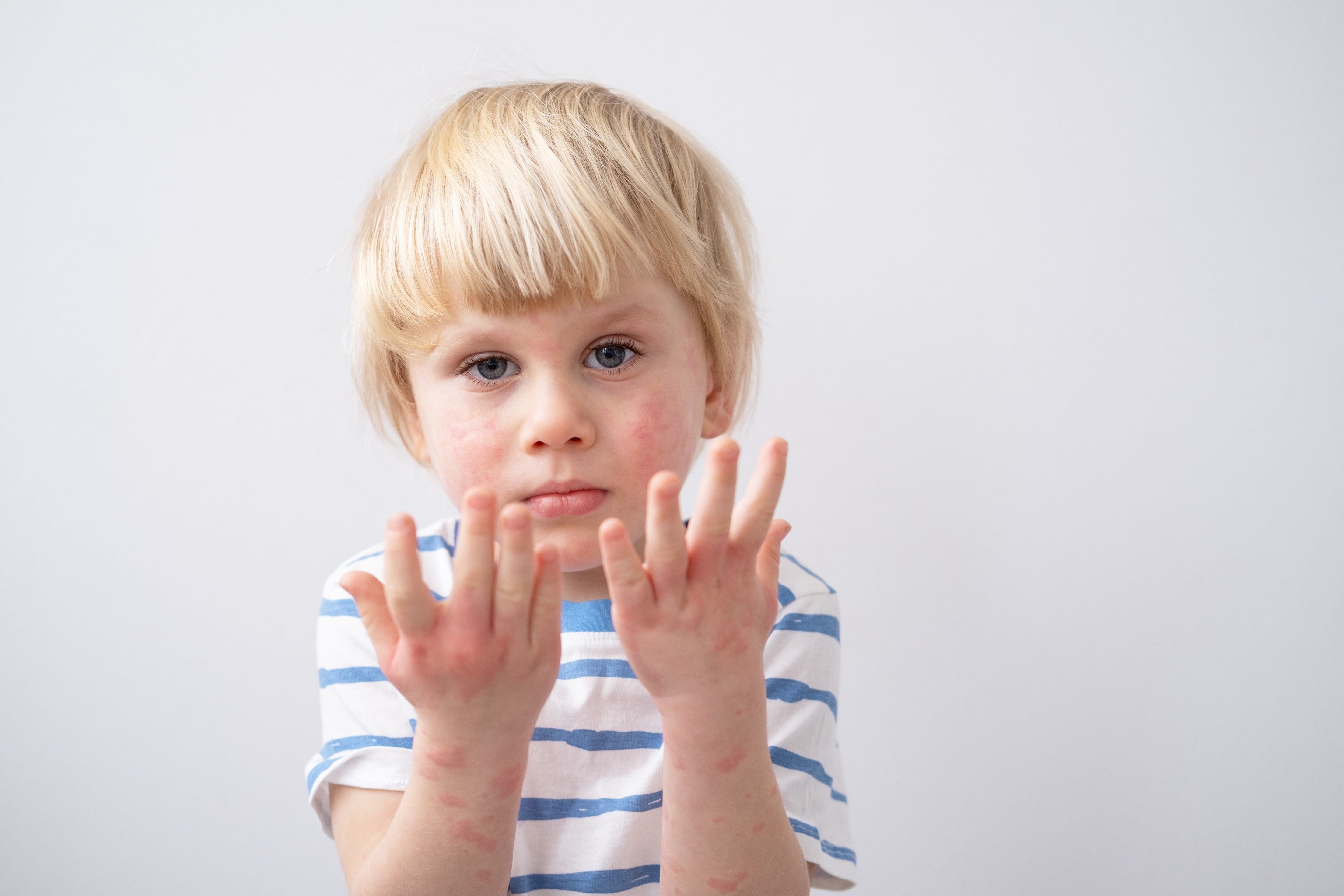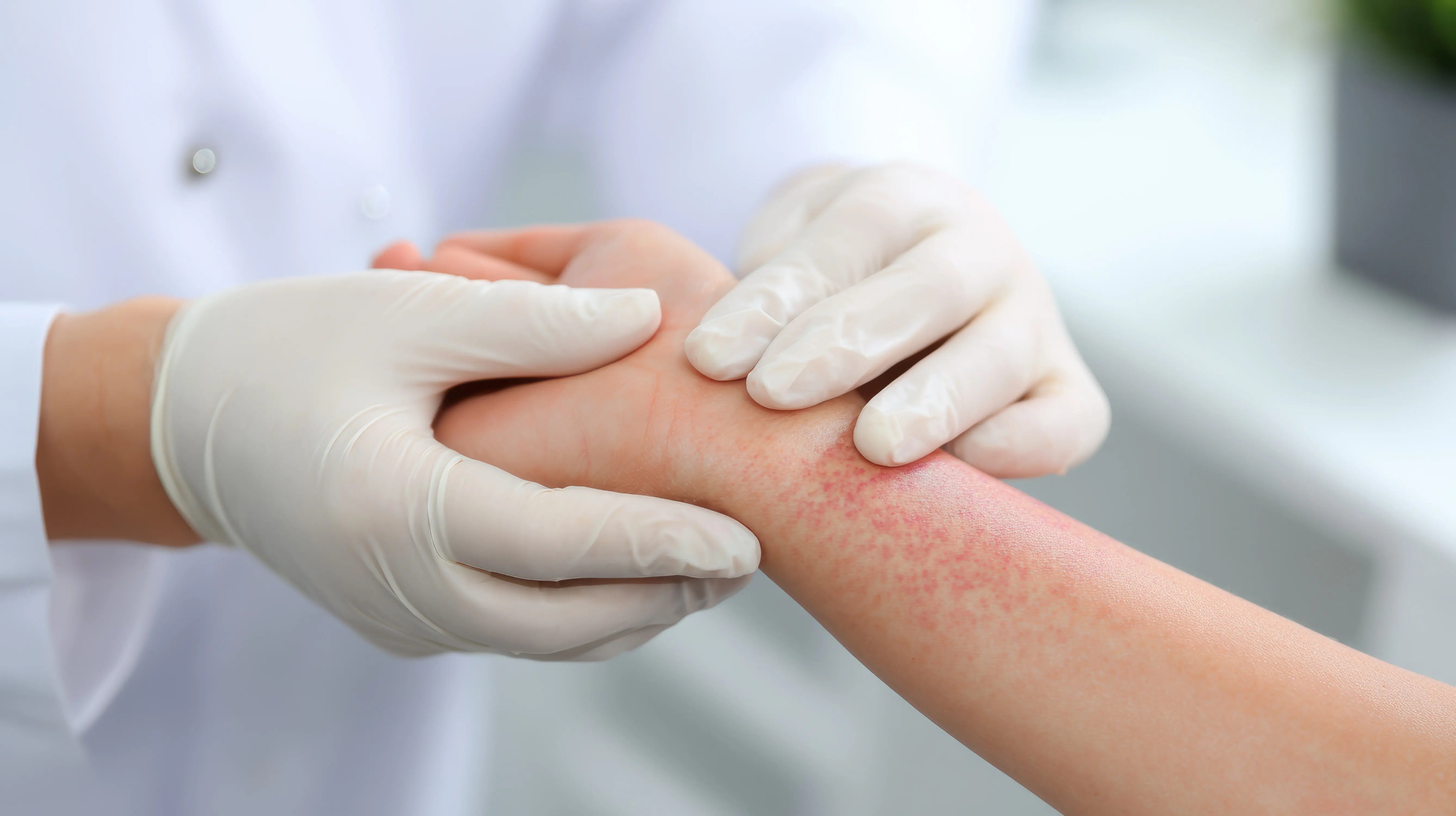Skin microbiome in children: role, importance and tips for preserving it
Your child's skin microbiota (skin flora) is essential for the health and well-being of their skin.
The skin microbiome represents all the living microorganisms present on the surface of the skin. This microbiome is formed in children from birth and continues to develop throughout their lives.
Understanding the importance and function of this microbiome is essential for maintaining healthy skin and preventing skin conditions such as eczema, acne and atopic dermatitis.
On your child's skin, "good" bacteria and pathogens coexist, invisible to the naked eye, forming a complex ecosystem that influences the skin barrier, the immune system, and even skin aging. A harmonious balance between these microorganisms is essential for skin that is resilient and protected against external aggressions.
The slightest imbalance in the immune system can lead to infections, diseases, etc.
…In this article, we will take an in-depth look at the role of the skin microbiome in children, its evolution, the consequences of an imbalance, and methods to preserve this precious ecosystem, thus ensuring healthy and radiant skin.
What is the skin microbiome?
Composition of the child's skin microbiome
The child's skin microbiome is made up of a diversity of microorganisms, mainly bacteria, but also viruses, microscopic fungi, yeasts, and even mites such as Demodex brevis and Demodex folliculorum.
At birth, an infant's skin is sterile, but it is quickly colonized by bacteria from the mother. In the case of vaginal delivery, the infant's skin microbiota reflects the maternal vaginal microbiota. During a cesarean section, skin-to-skin contact between mother and child influences the development of the infant's skin microbiota.
The most common bacteria on children's skin include staphylococci, including Staphylococcus epidermidis and Staphylococcus aureus, as well as corynebacteria and propionibacteria such as Cutibacterium acnes (formerly Propionibacterium acnes). These microorganisms form a complex biofilm (habitat), nourished by molecules and compounds secreted by the skin and other microbial communities. This biofilm is constantly renewed and plays a critical role in protecting the skin from pathogens and maintaining the balance of the skin barrier.
Differences with the adult microbiome
The skin microbiome of children differs significantly from that of adults until puberty. In children, the skin microbiota is less diverse and is mainly composed of staphylococci and corynebacteria. During adolescence, the skin flora becomes enriched with other types of bacteria, thus approaching the composition of the adult microbiota. Furthermore, the composition and diversity of the skin microbiota vary depending on age, sex, and environment.
Women and older adults have higher microbial diversity, influenced by factors such as cosmetic use and hormonal changes. Sebum-rich areas of the body, such as the face and scalp, harbor a higher density of bacteria compared to dry areas such as the forearms.
Variation in microbial community composition is also observed in children, although their microbiota is generally less complex than that of adults.
Role of the skin microbiome in children
Protection against infections
The skin microbiome plays a vital role in protecting a child from infection. Commensal (good) bacteria on the skin, such as Staphylococcus epidermidis, produce molecules such as bacteriocins, which slow growth and fight the invasion of pathogenic (bad) bacteria such as Staphylococcus aureus.
These defense mechanisms prevent unwanted germs from establishing themselves and causing skin infections (atopic dermatitis, eczema, skin inflammation, etc.). In addition, the diversity of the skin microbiota in children ensures broad colonization of the skin, thus limiting the possibilities of development of pathogenic germs. This living barrier constitutes the first line of defense against pathogens from the environment.
Development of the immune system
The skin microbiome plays a key role in the development of children's immune systems.
From birth, beneficial bacteria, such as S. epidermidis, settle on the skin and help the body learn to recognize what belongs to it ("self") and what is foreign ("non-self"). This helps prevent aggressive and excessive reactions of the immune system, such as autoimmune diseases.
These good bacteria communicate with skin cells and help them grow well, strengthening the body's natural defenses against harmful microbes. In short, the microbiome and immune system work together to protect the skin and maintain its balance.
Maintaining the 'good health and function' of the skin barrier
The skin microbiome also helps maintain hydration (retains moisture) and strengthens the skin barrier.
Microbiota and pH are closely linked, especially on the skin.
- The skin has a slightly acidic pH (around 4.5 to 5.5) , which helps maintain a healthy balance and prevent the proliferation of pathogenic bacteria.
- The skin microbiota contributes to this balance by producing substances that regulate pH (e.g., bacteria such as Cutibacterium acnes produce propionic acid, lowering the skin's pH and preventing the development of competing microorganisms and protecting against infections).
- Conversely, an unbalanced pH (too acidic or too alkaline) can weaken the skin and alter the microbiota, leading to dryness, irritation or pathologies such as eczema.
Advice: for sensitive, atopic skin, choose products with a physiological pH (4.5-5.5) , gentle and moisturizing, to respect the skin's balance and soothe irritations.
The skin microbiota not only helps protect the skin, but also repair it when it's injured. When the skin sustains a superficial injury (such as a cut or scrape), the naturally occurring beneficial bacteria on the skin actively participate in healing.
These bacteria play several roles:
- They promote the reduction of inflammation , which allows the skin to begin repairing itself more quickly.
- They contribute to the production of signaling molecules that activate skin cells involved in repair, such as fibroblasts that help with healing.
- They can also create an environment conducive to skin cell regeneration, maintaining a balance between defense against infections and stimulation of repair processes.
In summary, the skin microbiota helps the skin heal more efficiently after injury by supporting natural repair and regeneration processes.
Evolution of the child's skin microbiome
Influence of Breastfeeding
Breastfeeding has a significant influence on the evolution and composition of the infant's skin microbiome. Although cesarean delivery may disrupt the initialization of the skin microbiota by reducing exposure to the maternal vaginal microbiota, breastfeeding may compensate for this difference.
Studies have shown that breast milk contributes to the formation of a child's skin, salivary, and fecal microbiota, particularly in those born by cesarean section. Breast milk transmits maternal microorganisms to the child, helping to establish a more diverse microbiota similar to that of children born vaginally. In addition, the oligosaccharides present in breast milk, undigested by the child, serve as nutrients for beneficial bacteria, promoting their growth and proliferation.
This maternal influence via breastfeeding is essential for the development of a balanced and diverse skin microbiome in children.
Impact of the Environment and Cosmetic Products
The environment and the hygiene and cosmetic products used on a child's skin also have a significant impact on the development of their skin microbiome. Early contact with the environment, including air, people, and surfaces, contributes to the diversification of the skin microbiota. However, the use of harsh cosmetic products or those containing "overly strong" antibacterial agents can disrupt this balance, reducing microbial diversity and promoting the growth of pathogenic bacteria.
Cleansers with a pH that is too high (>7-8), such as certain alkaline soaps, which disrupt the hydrolipidic film because they are too aggressive.
Lotions that are too acidic (pH < 4), which can be irritating to already weakened skin and unbalance the skin's microbial flora.
Skin microbiome imbalance (dysbiosis): consequences in children
Atopic Dermatitis and Eczema
An imbalance in the skin microbiome, or dysbiosis, can have significant consequences on the health of a child's skin, particularly with regard to atopic dermatitis (atopy and eczema).
In cases of atopic dermatitis, skin dysbiosis is often caused by a predominance of the bacterium Staphylococcus aureus, which promotes inflammation and prevents the growth of other beneficial bacterial species that promote healthy skin and cell renewal. This dysbiosis results in a decrease in bacterial diversity, allowing S. aureus to proliferate and cause inflammation and superinfection, particularly when the skin is damaged by scratching eczema patches.
Children with atopic dermatitis often have a defective epidermal barrier and a biased immune response, which increases their vulnerability to this pathogenic bacteria.
Atopic plaques occur mainly in areas of the body where the skin is more fragile and more exposed to irritation. The most common places where they appear are:
- The face, especially around the eyes, cheeks and forehead.
- Elbows and knees, which are creased areas where the skin is often drier and prone to friction.
- The neck, where the skin can be sensitive to clothing and perspiration
- Armpits (folds that can retain perspiration).
- Hands and feet, especially in children.
Atopic plaques appear as redness, itching, and sometimes crusting, and can be exacerbated by environmental factors, such as cold, heat, stress, or humidity.
Other Skin Problems
In addition to atopic dermatitis, an imbalance in the skin microbiome can lead to other skin problems in children. Acne, for example, is often associated with skin dysbiosis, where certain bacteria, such as Cutibacterium acnes (formerly Propionibacterium acnes), overgrow, causing inflammation and skin damage.
Similarly, skin infections and superinfections can occur when the skin microbiota is disrupted, facilitating the growth of pathogenic bacteria. Excessive hygiene practices or the use of harsh cosmetic products can exacerbate this imbalance, damaging the skin's hydrolipidic film and promoting the growth of harmful bacteria.
Additionally, skin dysbiosis may also be linked to other allergic and autoimmune conditions, such as asthma and allergic rhinitis, due to its impact on the immune system and skin barrier.
How to take care of your child's skin microbiome?
"As you may have noticed, the skin is the protective barrier between the outside and the inside of our body. It is therefore essential to take care of it from a very young age. This is why we recommend using pediatric dermo-care products, specially designed and rigorously developed for children's skin ."
Gentle and respectful hygiene
To take care of your child's skin microbiome , here are some recommendations for gentle and respectful hygiene :
- Choose gentle products: Use hypoallergenic, pH- neutral , or specially formulated soaps for children's delicate skin. These products cleanse without disrupting the skin's microbiome.
BATH
- Bathing Frequency : It is not necessary to bathe your child every day. Two to three baths per week are sufficient to maintain good hygiene. Frequent baths can dry out the skin, especially if the water is too hot and alkaline (tap water).
- Drying skin folds : After each bath, thoroughly dry skin folds (such as under the arms, behind the knees) to avoid stagnant moisture and the risk of dermatological problems such as irritation or infection.
TARGET CLEANING
- Targeted daily cleansing : You can clean certain more exposed areas daily , such as the face, neck, hands, buttocks and private parts, with a glove soaked in soapy water and/or cleansing water.
- Choose DOUCEA EAU cleansing and soothing waters : Choose certified and dermatologically tested products, based on natural ingredients, to preserve the balance of your child's skin while gently cleansing.
- Choose cleansing waters with prebiotics and probiotics (DOUCEA Water) which are ideal for strengthening the hydrolipidic film and supporting the skin microbiome. Use soothing floral waters (DOUCEA WATER): Cornflower and Chamomile floral waters are perfect for soothing irritated skin and adding a touch of softness to your child's skincare routine.
By following these recommendations, you can provide your child's skin with respectful care that supports their microbiome while preventing irritation and other skin problems. Doucea's skincare expertise will guide you through your child's routine.
Choice of cosmetic products: GENTLE, without controversial ingredients and “enriched with prebiotics”
Choosing the right cosmetic products is essential for preserving your child's skin microbiome. Choose products that are fragrance-free and free from harmful agents such as parabens, phthalates, PEGs, silicones, sulfates, triclosan, formaldehyde, bisphenol A, etc.
Creams and lotions should be selected according to your child's skin type. For example, for normal and sensitive skin, a soothing and fluid cream is recommended ( APAISEA ), while for dry skin (and/or atopic skin), a more nourishing cream (sweet almond oil), which restores the prebiotic skin barrier and reduces redness (anti-inflammatory such as madecassoside) is necessary and effective (we recommend DOUTOPIA ).
Food and diet
Your child's diet plays an important role in the health of their skin microbiome. A diet rich in fruits, vegetables, and healthy fats helps maintain a healthy balance of gut and skin microbiota.
Probiotics and prebiotics found in certain foods, such as yogurt and vegetables, promote the growth of beneficial bacteria. Additionally, a balanced diet strengthens the immune system, which is essential for overall skin health. It's recommended to avoid overly processed and sugary foods, which can disrupt the microbial balance and lead to skin problems.
Importance of hydration
Hydration is essential for maintaining the health and balance of your child's skin microbiome. Children's skin, which is particularly low in oil, requires regular hydration to stay protected and healthy. Use moisturizing products that are tailored to your child's skin type, and make sure they contain natural, non-irritating ingredients.
Creams and lotions enriched with Filmo-Protect Complex, inspired by the composition of sebum, can help moisturize and protect skin from drying out. Additionally, protecting skin from UV rays with child-friendly sunscreens is essential to prevent skin damage and maintain the integrity of the skin barrier.
Importance of Compliance
It has been reported that only 3 out of 10 children complete their treatment. This is because most products are not suitable for children: they are sticky, they sting, they are "too greasy," they are not very pleasant... As a result, after a few days, they get tired of it and give up.
Doucea has co-created solutions with children that are smooth, pleasant to use, and non-sticky, thus encouraging the establishment of a routine. Because it's consistency that achieves long-term results!
Often, treatments are overlooked because the products have an austere appearance and uninviting medical design. Here, everything has been designed with and for children, so they'll want to use their treatment every day.
When should you consult a healthcare professional?
Signs of significant dysbiosis
It's essential to consult a healthcare professional if you observe signs of significant dysbiosis in your child. Atopic dermatitis, characterized by redness, itching, and dry patches that can crack and bleed, is a clear indicator of skin dysbiosis. Similarly, the appearance of severe acne, psoriasis, or other recurring skin infections should raise alarm and prompt a medical consultation.
Skin infections such as impetigo, erysipelas, or abscesses, which may occur due to skin dysbiosis, also require immediate medical attention. Patients with severe atopic dermatitis are particularly at risk of developing disseminated herpes simplex virus infections, requiring urgent systemic treatment.
Treatments and solutions for atopic dermatitis
When consulting a healthcare professional for skin dysbiosis, several treatments and solutions can be considered. For atopic dermatitis, topical corticosteroids are often the first-line treatment, followed by topical calcineurin inhibitors such as tacrolimus and pimecrolimus.
These treatments help reduce inflammation and restore skin balance. In cases of skin infections, antiseptics (antimicrobials) such as chlorhexidine, octenidine, or potassium permanganate may be prescribed. Topical or systemic antibiotics may be necessary for widespread bacterial infections, but their use must be cautious to avoid antibiotic resistance.
Generally speaking, many parents notice rebound effects of corticosteroids when treatment stops, it is then important to prolong the effects with more "gentle" creams without corticosteroids but which have a recognized effect in reducing inflammation (madecassoside from centella asiatica). The anti-inflammatory effect may be less "powerful" but will avoid these rebound effects.
Skincare routines can be very demanding for families, especially with a child who has atopic skin. Having to be consistent and strict in applying skincare can require a lot of time and effort.
But even the slightest relaxation can lead to a recurrence of symptoms. This can make the daily management of atopy even more stressful.
It is important to emphasize that consistency in care is essential to maintain the skin in optimal condition, but it is also possible to adopt strategies to make this routine more practical and less restrictive :
- Simplify the steps: Using multifunctional products, like emollients or cleansers that moisturize and soothe (and reduce inflammation) at the same time, can streamline the routine.
- Adjust the frequency of treatments: Sometimes, it is enough to slightly adjust the frequency of treatments according to the needs of the moment (for example, by spacing out baths or reducing the number of products used) without compromising effectiveness.
- Family Routine: Making the care routine a time of family bonding can make it more enjoyable and less stressful for both parents and children.
Conclusion
In conclusion, for restored skin health...the skin microbiome plays an important role in strengthening the skin barrier, stimulating the immune system, and preventing infections. It is essential to maintain a healthy balance of this microbiome by adopting gentle hygiene, choosing respectful cosmetic products, and promoting a balanced diet rich in probiotics and prebiotics. Avoid harsh products, protect your skin from UV rays and pollution, and consult a healthcare professional if you experience signs of dysbiosis.
By caring for this precious ecosystem, you contribute to your child's health and well-being. Taking action today to preserve your child's skin microbiome is a vital investment in their long-term health.
FAQ
What is the skin microbiome?
The skin microbiome, or skin microbiota, is a community of microorganisms including bacteria, microfungi, viruses, and mites that colonize the skin. These microorganisms, often symbionts or commensals, form a complex ecosystem that varies across body areas and individuals.
They play an essential role in protecting against pathogens, regulating inflammation and educating the immune system.
How to restore the skin microbiota?
To restore the skin microbiota, several methods can be used:
- Bacteriotherapy: Using probiotics, postbiotics, or fermentation products to optimize and restore the microbiota. Probiotics compete with pathogens, modulate immune functions, and produce antimicrobial metabolites.
- Skin microbiota transplantation: Transferring the skin microbiome from one healthy person to another, although this method carries risks of pathogen transmission.
- Prebiotic stimulation: Use prebiotics to stimulate the beneficial bacteria already present on the skin, reducing the risk of skin immune reactions.
- Respectful skincare practices: Avoid excessive cleansing, hot baths, abrasive treatments and use products with an acidic to neutral pH to preserve the hydrolipidic film and skin microbiota.
How to improve the microbiome?
To improve the microbiome, it's essential to eat a diet rich in fiber, prebiotics, and probiotics. Consume fiber-rich fruits and vegetables, such as bananas, carrots, and artichokes. Include whole grains, legumes, and fermented foods like sauerkraut and yogurt.
Also use healthy oils like olive oil and add prebiotics found in nuts and seeds. Additionally, consider using proven probiotics, such as Saccharomyces boulardii, to boost the immune system and maintain intestinal balance.
How to get rid of bacteria on the skin?
There are several methods that can be used to get rid of bacteria on the skin. Chemical disinfection involves the application of hydroalcoholic products or antiseptic soap.
With a hydroalcoholic product, apply at least 3 ml to your hands and rub for at least 45 seconds until the product is completely dry. Alternatively, use water and antiseptic soap, lathering all skin surfaces for at least 60 seconds, then rinse thoroughly and dry your hands.
















